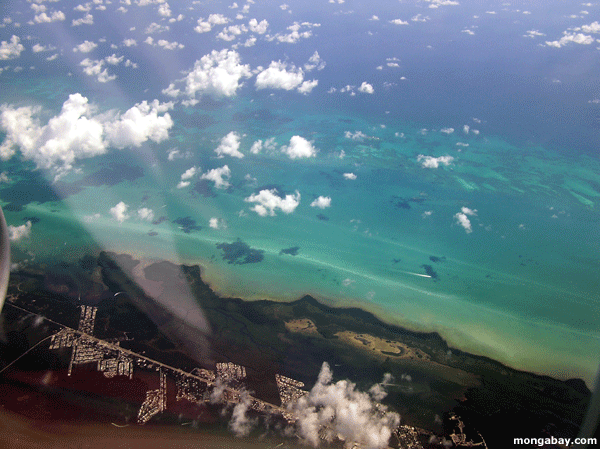Gulf dead zone may by increasing according to researchers
April 15, 2005

|
A group of scientists reported that the “dead zone” area of the Gulf of Mexico an expanse of water so devoid of oxygen that sea life cannot live in it has appeared much earlier than usual this year meaning it could be potentially larger and affect marine life more adversely than normal.
A team of scientists from Texas A&M University, Texas A&M at Galveston, Louisiana State University and NASA recently surveyed the dead zone in the northern Gulf of Mexico and found that this year’s zone may exceed the 5,800 square miles of the Gulf of Mexico affected last summer. In the last 30 years, the dead zone has become an annual summer phenomenon, fed by rising use of nitrate-based fertilizers by farmers in the Mississippi watershed. The nitrates, carried into the gulf’s warm summer waters by the river, feed algae blooms that use up oxygen and make the water uninhabitable.
Steve DiMarco, project leader associate professor in the Department of Oceanography at Texas A&M, explains “During January and February of this year, the flow of the Mississippi River was larger than at any time in 2004. That means the stratification levels between the fresh river water and heavier salt water could results in increased hypoxia, which creates the dead zone.”
Hypoxia is a term for extremely low levels of oxygen concentrations in water. Hypoxia can result in fish kills and can severely impact other forms of marine life where it is present.
“We saw no hypoxia in this area until June of last year, and this year we found in late March,” DiMarco says.
“If the physical conditions we noticed continue, it could mean an unusually strong hypoxic zone this year, and that’s not good news.”
DiMarco notes that the most intense hypoxia levels are usually between 30 to 60 feet below the surface and “Bottom-dwelling marine life, where some of the most intense hypoxia levels are, can easily die.”
This report is based on a release from Texas A&M University. Sections of this have been excerpted from that release. You can find the original release at http://www.tamu.edu/univrel/aggiedaily/news/stories/05/040605-14.html
Related articles:
Shark attacks blamed on hypoxia “dead zone” in the Gulf of Mexico, August 4, 2004














